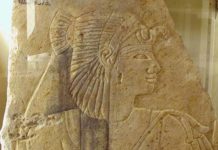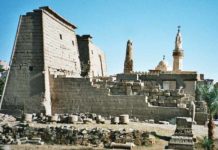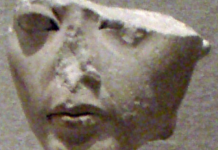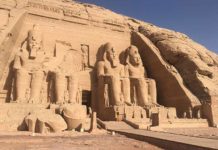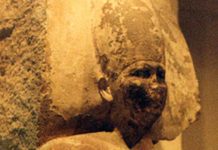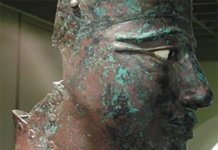The development and design of bows and arrows used for warfare by the armies of Ancient Egypt
The bow is an almost universal weapon, and Ancient Egypt was no exception in developing archery technology for use both in hunting and in warfare. It has survived not just from pre-Dynastic Egypt into the New Kingdom and Ptolemaic periods, but into the Christian and Islamic eras also.
The Earliest Bows
The first Egyptian bows, as elsewhere in the world, were horn bows, made from two curved animal horns, in this case antelope horns, with a wooden section in the middle. By the beginning of Dynastic times, recurve bows made entirely of wood had replaced horn, though animal remains were still used for glue, and for the bowstring, which was made from sinew.
Plant material began to be used for bowstrings during the Old Kingdom, but sinew was still preferred, and the plant material was found to be more useful for the manufacture of arrows.
Simplifying the Bow
During the Old Kingdom, the recurve bow was largely abandoned in favour of the simple bow, now known as the Self Bow. This was a two-metre long wooden bow, made of acacia wood and slightly curved at both ends. It was also sometimes strengthened by rope or cord to prevent the wood from splitting.
The self bow was much easier to maintain, but was unwieldy due to its length, and required much more effort to draw when compared to the double curved bow, who’s second curve doubles the power of the string when drawn.
Despite this inferior power, the Self bow remained in use with the Egyptian military throughout the Middle and New Kingdoms, even though composite bows had been introduced by then, and recurve bows had returned. Indeed the Self bow remained the bow of choice for Tuthmoses III
The Composite bow of the Hyksos
The Hyksos peoples, who ruled Egypt in the Second Intermediate Period, between the Middle and New Kingdoms, had introduced the composite bow during their rule, and this became popular in the Egyptian military in the New Kingdom.
The Hyksos bow brought horn and sinew back to Egyptian archery. It was a recurved bow, shortened and with a pre-existing tension in the wood. Horn, which could take compression, supported the side of the bow facing the archer, while sinew, which could stretch, was bonded to the wood on the side facing the enemy, the whole thing then secured with bark.
All of this meant that it had a lot more power and a higher draw weight, in a bow only three to four feet long. The complexity also made the compound bow more difficult to produce and to maintain. It needed protection from moisture as well as frequent re-stringing, and so Egypt preferred to import them from other areas than to actually manufacture them at home, though some were produced in Egypt.
Egyptian Archery at war
Because re-stringing the compound bow was often a two-man job, it was more common to issue these weapons to chariot archers. The extra power of this bow was a useful frontline weapon against enemies in scale armour, and Egyptian chariots were used for fast archery attacks on targeted areas, so they needed the stronger weapon. The driver could then also assist the archer in re-stringing.
Archers on foot retained the simple, Self, bow throughout the New Kingdom. These were simpler to mass produce, required less maintenance by the infantry, and were used against unarmoured infantry and fleeing enemies.
Praise the Gods and Pass the Ammo
Different types of arrows were used by Egyptian archers, for different purposes. The arrow shaft was made of reed, with three feathers and an arrowhead. The basic arrowhead was flint, with two trailing barbs, however other types of stone and even wooden arrowheads were used alongside these.
By the second millennium BC, bronze arrowheads had been introduced, and these were effective when shot from a composite bow in piercing scale armour. Later, barbed iron arrowheads were not unknown, though iron remained a relatively rare and precious metal in Egypt. There were even blunt arrowheads for practice shooting, and bird-hunting.
Although military archers wore linen quivers across their backs, there are tomb paintings depicting hunters holding spare arrows by the last two fingers of the right hand, while drawing the bow with the first two fingers.
Sources:
- Armies Of The Pharoahs, Mark Healy, Osprey, 1992
- Egyptian Warfare And Weapons, Ian Shaw, Shire, 1991
- Fighting Pharoahs, Bob Partridge, Peartree, 2002



